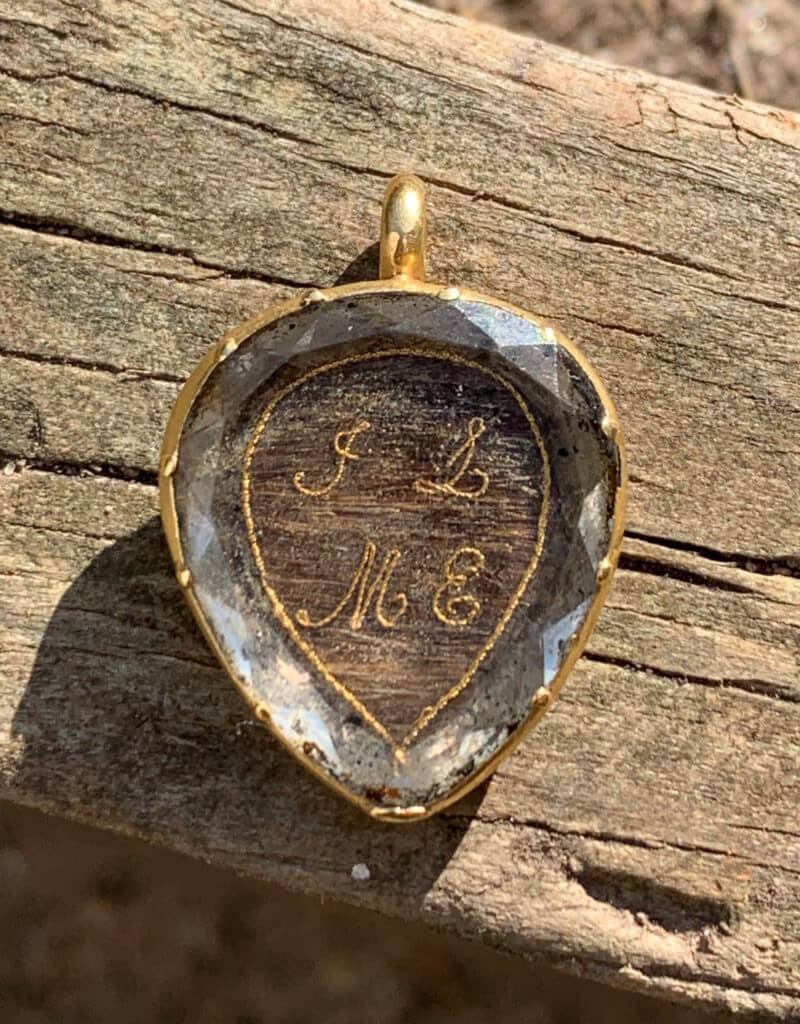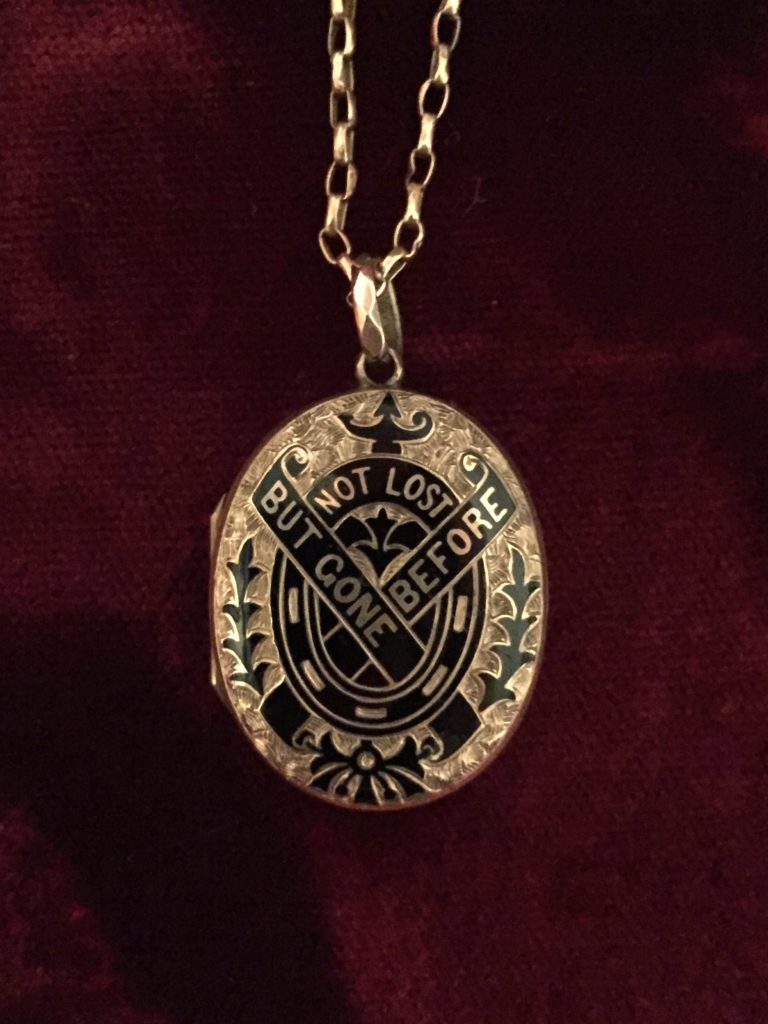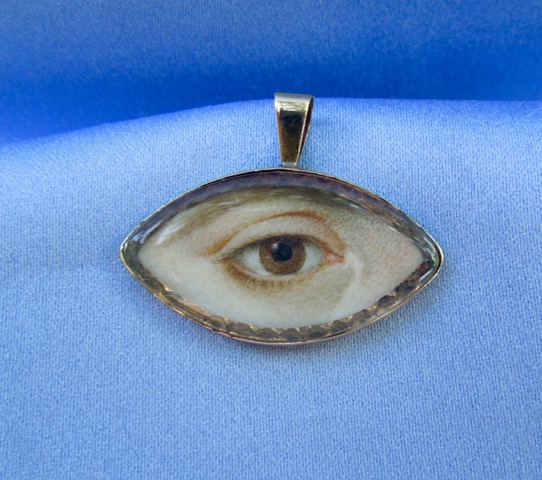To bliss / There’s rest in Heaven Sepia Neoclassical Pendant
‘To Bliss’ is one of the more commonly seen statements in Neoclassical jewels, be they sepia or colour. It is often the introductory statement base with another phrase used in conjunction to form the full dedication and it offers us many questions.
It is a statement on the culture of the time. While religion was not the overt basis for art as it had been prior to the 16th century, religion was still the fundamental unpinning of a society that had the monarch as the Supreme Governor of the Church of England. With tokens of grief, in a time when the fashion was to revive classical thought and knowledge that questioned and challenged modern life, the solace of life after death still required comfort in the final reward. To know that a loved one was going ‘to bliss’ and on to heaven was, and still is, a comfort. Indeed, the very thought of the afterlife is the fundamental underpinning of mourning itself; what is a jewel if not to keep the memory of a person alive? During the late 18th century, with high mortality rates, rapid expansion and challenges to established empires, unprecedented industry growth, jewellery such as this pendant offered the very blissful comfort that the ‘self’ needed. It also did so in a fashionable and very beautiful way.
There are three distinct levels in this piece, with its background, stage and foreground. The way the artist has used shadow and light-sepia tones to denote these is exceptional. For a collector and historian, the first point of note is the lack of the willow, but the use of the oak tree (strength, honour) trunk to flank the right hand border. The tree’s dead branch (mortality) alludes to death in a way that doesn’t interfere with the main scene, but adds to it.
With the female, she is interacting with the tree, her white dress giving stark contrast. A handkerchief in her left hand shows protection from the elements and also represents the capturing of her tears. This leads the eye to her face, where the handkerchief would interact. Her face is sullen in grief, truly expressing her emotions, whereas many contemporary pieces would not bother to elaborate on the simple lines of the mouth and eyes. Her veil is also beautifully designed; cascading down her head and onto her body – note the shading to give it depth. It’s almost moving with the wind in the forest where she sits.
The urn and cherub are designed in the standard style that was very well defined by the 1780s. The plinth, also. Note their style and how the female is almost a personalised figure placed on top of a a piece which may have had these elements pre-designed and then tailored for this lady. Indeed, note the similarities with these pieces:
> “To Bliss / “In life Beloved, In Death Lamented” A Sepia Ring
> In a 1789 Bracelet, Affection Weeps, Heaven Rejoices
> 1786 Sepia Ring “What Thou Has Lost, Heaven Has in Store”
> 18th Century Costume, Mourning and Art in a Neoclassical Miniature
Its navette shape helps to draw the eye from the top to the bottom, giving more contrast even to the earth on the ground below the lady’s feet. Finally, the cypress’ in the background are lightly shaded, giving all the elements of shadow and darkness to the foreground and depth to the entire scene.
Further Reading:
> The Oak
> The Woman
> The Angel
> The Urn








